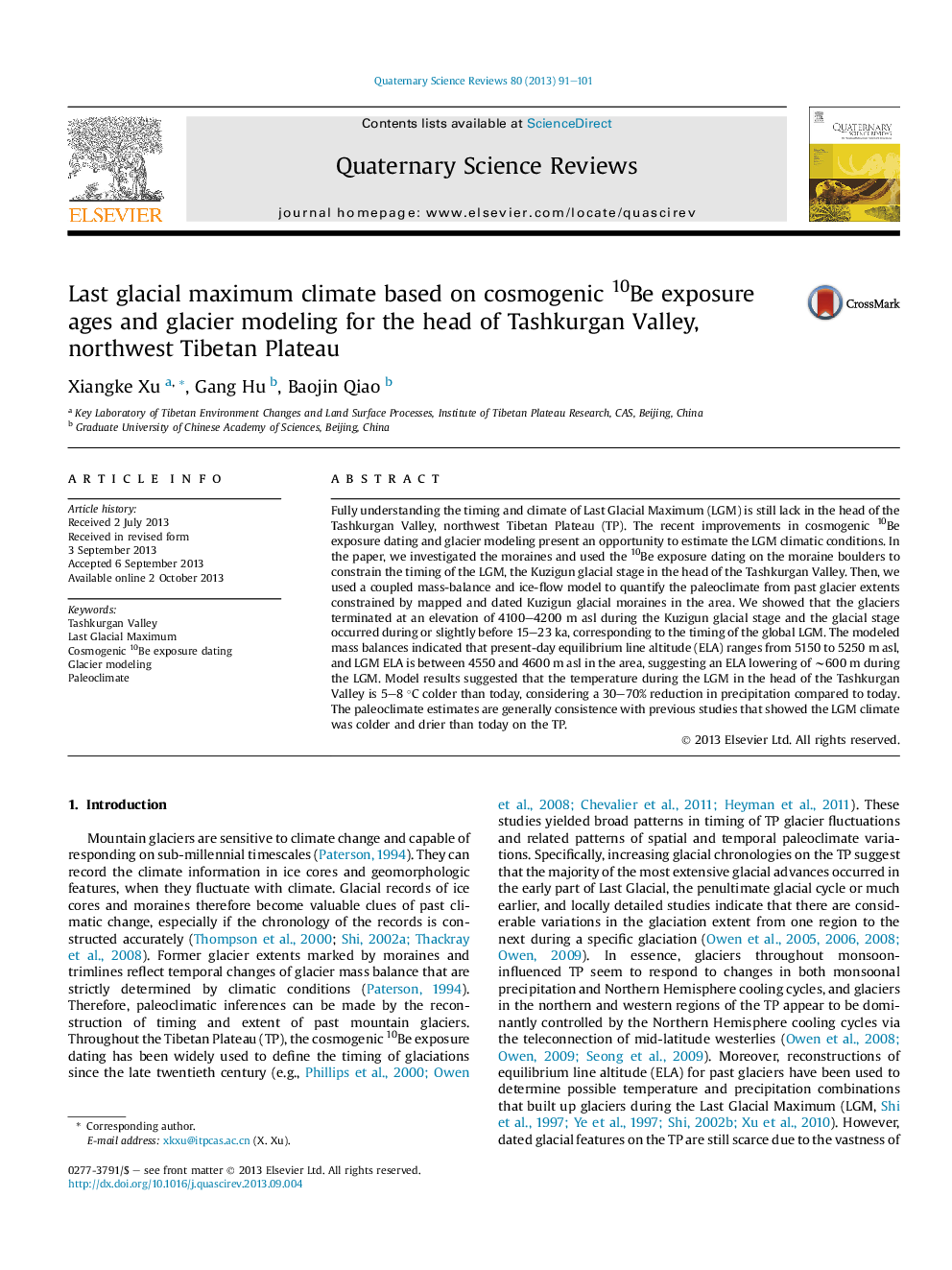| کد مقاله | کد نشریه | سال انتشار | مقاله انگلیسی | نسخه تمام متن |
|---|---|---|---|---|
| 4735338 | 1640854 | 2013 | 11 صفحه PDF | دانلود رایگان |

• Cosmogenic 10Be exposure ages constrain the timing of the Kuzigun glacial stage.
• A glacier model is used to interpret the Last Glacial Maximum climate.
• Kuzigun glacial stage is related to the LGM in the head of the Tashkurgan Valley.
• LGM climate was 5–8 °C colder than today with precipitation being 30–70% of today.
Fully understanding the timing and climate of Last Glacial Maximum (LGM) is still lack in the head of the Tashkurgan Valley, northwest Tibetan Plateau (TP). The recent improvements in cosmogenic 10Be exposure dating and glacier modeling present an opportunity to estimate the LGM climatic conditions. In the paper, we investigated the moraines and used the 10Be exposure dating on the moraine boulders to constrain the timing of the LGM, the Kuzigun glacial stage in the head of the Tashkurgan Valley. Then, we used a coupled mass-balance and ice-flow model to quantify the paleoclimate from past glacier extents constrained by mapped and dated Kuzigun glacial moraines in the area. We showed that the glaciers terminated at an elevation of 4100–4200 m asl during the Kuzigun glacial stage and the glacial stage occurred during or slightly before 15–23 ka, corresponding to the timing of the global LGM. The modeled mass balances indicated that present-day equilibrium line altitude (ELA) ranges from 5150 to 5250 m asl, and LGM ELA is between 4550 and 4600 m asl in the area, suggesting an ELA lowering of ∼600 m during the LGM. Model results suggested that the temperature during the LGM in the head of the Tashkurgan Valley is 5–8 °C colder than today, considering a 30–70% reduction in precipitation compared to today. The paleoclimate estimates are generally consistence with previous studies that showed the LGM climate was colder and drier than today on the TP.
Journal: Quaternary Science Reviews - Volume 80, 15 November 2013, Pages 91–101